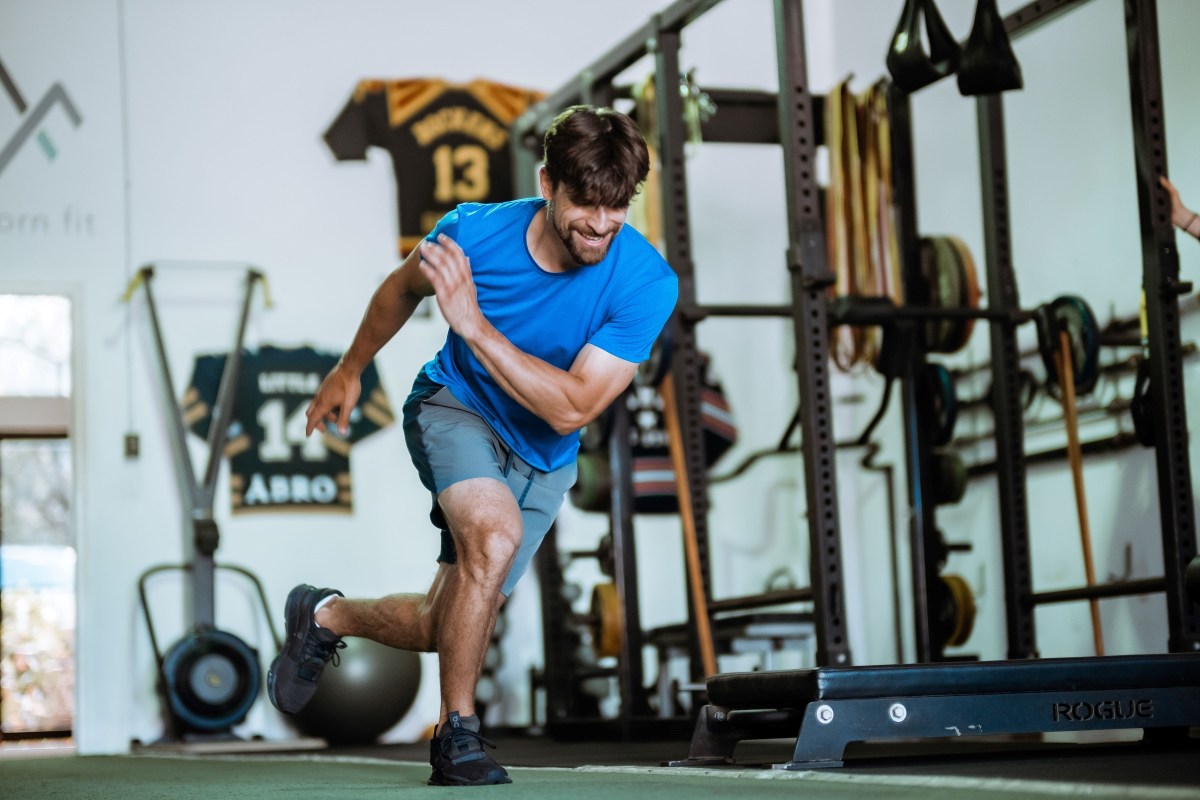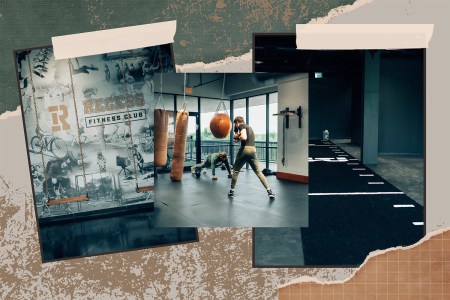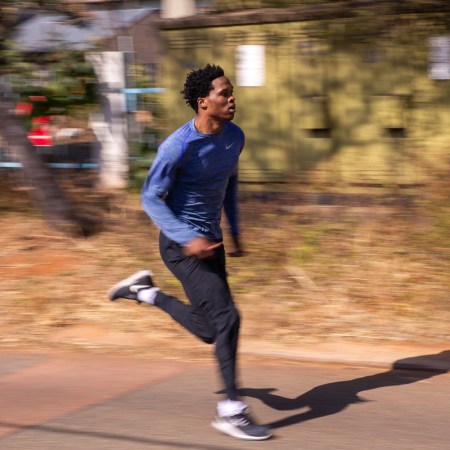Ryan Vesce played professional hockey for nine years, in half a dozen countries, before his body decided it simply couldn’t take it anymore. Chalk it up to the back surgery, or the hip surgery, or both, but retirement seemed like the next step — the only step. Still, the former San Jose Shark knew that mentally, at least, he had more hockey in him.
“I wasn’t ready,” Vesce tells InsideHook. “So in an effort to extend my career, I teamed up with Sean Sullivan.” He chose the right man: a certified strength specialist, Sullivan had worked with professional athletes in golf, tennis and baseball, in addition to ice hockey. Over his career, he’s had 11 Olympians in his corner. Together, Vesce and Sullivan plotted to get the former back in his skates. They examined various techniques that they believed worked, then catered them specifically to Vesce’s needs. He played for five more years.
“It was truly remarkable,” Vesce says. “After I retired, it became my mission to tell the world what we discovered. That’s when my life really changed.”
What did the duo stumble into? A rehab-driven fitness routine that Vesce says has him feeling better now at 41 than he did in his 20s. And that’s coming from an erstwhile captain at Cornell, who spent the aughts pushing heavy weight and pushing his opponents around on the rink.
Vesce and Sullivan dubbed their new program the Matterhorn Method, and launched their first gym, Matterhorn Fit, in Florida’s Bonita Springs in 2018. A second location followed in Naples three years later. The budding franchise is an anecdotal — yet robust — representation of some ascendant trends in the fitness space: individualized programming, strength training for all demographics and neurological-based movement patterns.
Texas’s Buzziest Gym Is Inspired by Childhood Recess
The Dallas studio stacks nostalgia, hard work and unadulterated joyYour Brain on Strength Training
A strength and conditioning coach named Ben Griffin shared a fascinating post on LinkedIn earlier this year, writing, “It’s important to remember that qualities such as strength, power and speed are very neural…. [When] athletes are training to develop these qualities they’re not only training their muscles, but also their nervous system.”
Griffin accompanied his words with a photo of the human body’s inner neural network, concluding, “It’s freaky to think that this is inside us.” Most of us forget it’s even there — we chalk up our lives’ most athletic moments to sheer instinct or strength, our disappointments to atrophy and injuries. And yet, our neural networks are always playing a role. That brain-body link impacts muscle recruitment, reaction time, energy expenditure, you name it.
If you train your neuromuscular connection with intention, the thinking goes, you can more effectively move your body through space (or move a club, racquet, bat or hockey stick through that same space). You can actively coach yourself to recruit as many muscle fibers as possible throughout the body — including those your body may have long since given up on — and perform complex tasks without the requisite fatigue you’ve gotten used to.
The last decade has seen an exciting rise in motion-capture labs throughout the wellness space, dedicated to enhancing neural control. A brand called Panther preaches “kinesthetic awareness,” outfitting athletes and amateurs alike with instructive sensors that buzz whenever their movement patterns are off course (e.g., an unsure shooting guard, or a painter looking to hoist tools above his head again after a shoulder surgery).
This sort of monitoring can get very specific: an English company, called Pacelab, is on a mission to disseminate the “governing dynamics of fast bowling.” Not bowling bowling, but cricket — it’s a big deal (and big business) throughout much of the world, and a program that pairs traditional coaching with the latest in sports science can make a big difference. Pacelab outfits trainees with exoskeleton suits, and has them play with various weighted balls in order to build their velocity from the ground up.

So, What Is the “Matterhorn Method”?
Vesce and Sullivan’s studio has its own ways of coaxing out the neural network. Vesce recently broke down the four-step process for us:
1. Diagnose: Find the root cause of the problem.
2. Reconnect: Prime the neurological system for reconnection.
3. Reinforce: Use specific exercises to reinforce that “new” connection.
4. Strengthen: Prevent the problem from returning and enhance overall health.
Sounds simple enough. In practice, it takes work — and electrical stimulation. You may be casually aware of EMS’s role in today’s fitness landscape (influencers like to tout trendy shock pads, with the promise that they’ll give you abs). Matterhorn uses them for a more…cerebral reason than all that, you might say, searching for those bodily “disconnects” in the diagnostic phase by administering low-intensity, direct-current EMS.
From there, rehab specialists are able to design an individualized program that’s tailored precisely to a trainee’s needs, hopes and dreams. Almost everyone — whether they’re looking to mount a professional hockey comeback, or not — wants to be pain-free. But the program’s more than that. It’s about re-establishing movement patterns that will stand the test of time. It’s about reaching an understanding with your body: why it feels the way it does, what it will take to make it feel and perform differently.
The Strengthening Phase
“Typically [our clients] go to their community gym, do the same routine every day and then wonder why they are in pain and have restricted range of motion,” Vesce says. “But one of our key components is variety. Once we get the brain and body to communicate properly, we can use a wide variety of targeted exercises to accelerate the speed of those connections. Once our clients experience a professional-athlete level of care, their old routine seems very amateur.”
Even when Vesce was receiving “pro athlete care” himself, he wasn’t fully aware of the ways in which his neuromuscular connection had frayed. “I was exposed to many different types of training and recovery philosophies,” he admits, citing long hours in the gym spent trying to get as strong as possible. “Now, personally, I’ve been in the strengthening phase of the Matterhorn Method for a long time.”
Vesce practices “movement sessions” four times a week, combining lower-body days with upper-body days. They mix dynamic movements with sprinkles of range-of-motion and cardiovascular work. That level of variety might sounds exhausting, but it’s by design: the body never gets to settle into something familiar, and the brain has to keep adapting. Pain is kept at bay along the way. He says that rehab specialists at Matterhorn use different exercises, attachments, hand placements, tempos and bands, and combine strength training with soft tissue work.
There’s a level of irony that a former hockey player is preaching vanguard pain therapy — the sport’s tough-as-nails reputation subsists on its players fighting through any pain imaginable. But a program like the Matterhorn Method suggests that the act of addressing pain is actually the toughest act you do. And it’s perhaps your best shot at staying in the game: in his spare time, Vesce is able to enjoy playing soccer with his kids, and pickleball with his wife and friends.
The Charge will help you move better, think clearer and stay in the game longer. Subscribe to our wellness newsletter today.

























